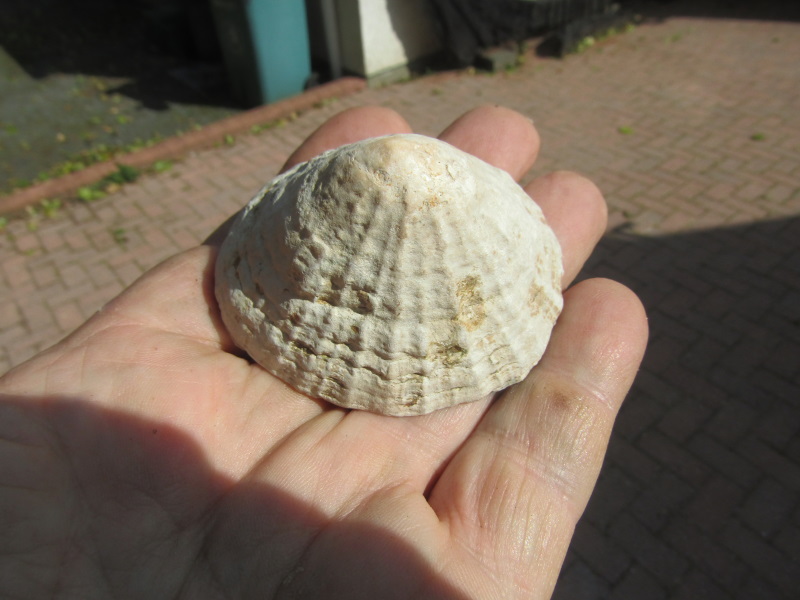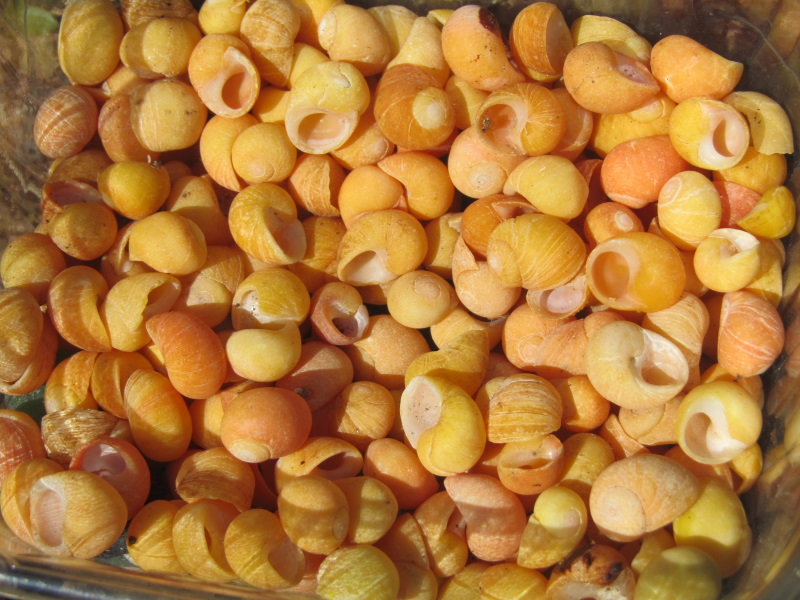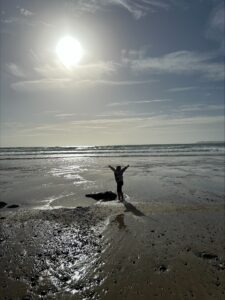The Sea Shells of Sandy Haven
Rainy days and the abundant sea shells of Sandy Haven beach have combined to provided much entertainment to our children and grandchildren at The Anchorage. Before going to the beach I like to show them some ‘treasures’ from Sandy Haven. The most common sea shell on the beach is the cone-shaped limpet. I have a box in which I keep painted limpet shells (see photograph). These make excellent presents for children to take back home with them for their friends. Also in the box I have my ‘world record’ limpet for Sandy Haven beach. This is the biggest one I have ever found and the challenge to the children is to find a bigger one – a ‘world beater’. If the children collect a bucket of sea shells then a rainy day activity is to paint the shells with water colors and let them dry. Larger shells such as scallops are big enough for more elaborate color schemes (photograph).
A striking shell on the beach is the common bright yellow periwinkle shell (photograph). They come in a variety of colors including red, but is the yellow type that stands out and can easily be seen. I have a glass jar of these to show children. With it comes the story of how, far away on the Pacific Islands, there was metal so the people there had to use sea shells instead of money. In fact they favoured the cowrie shells. In the Marquesas Islands the people grew these shells on palm tree fronds that are cut and placed in the lagoon. There whole sack loads of small cowrie shells were used for big purchases. The yellow periwinkle shells are most commonly found on Sandy Haven beach just after the winter storms. As the summer progresses they become rarer. So I explain that I am aiming to become a periwinkle millionaire and I will buy big yellow periwinkle shells for 30 pence each and small ones for 20 pence. So they can earn some metal money to buy sweets, and bubble gum and other essentials. I also ask that it is only the yellow ones that are wanted, not the ones that have been on the beach for several years and are bleached almost colorless. I have been surprised to have had some strong cases presented for a periwinkle that might be a 30 p specimen rather than a 20p one.
Another use for sea shells is making sea shell lamps. Here an ordinary electric lamp base or an old bottle is covered in a layer of putty. Sea shells are then pressed into the putty to cover the lamp base. Patterns can be made by arranging shells of different sizes, colors and shapes (Turritella or screw shells are very useful here). The whole is then left to go hard. Finally a coat of varnish is added to make the shells shine. We still have some lamps of this kind made by our children over a quarter of a century ago.
The law-abiding citizen could read the ‘Coastal Protection Act of 1949’ aimed at reducing erosion of the coastline. The bad news is that it is illegal to remove a single pebble, sand, shingle and stones from a beach. Offenders can be fined up to £1000 by the local council and material has to be returned. The good news is that it is legal to remove sea glass, sea shells and driftwood. Fossils found on a beach can also be removed, but major big fossil finds should be reported as possible important scientific discoveries. Hammering of cliffs to collect fossils is no longer allowed in the Pembrokeshire Coast National Park. There are also Sites of Special Scientific Interest (SSSI) where important geological and biological features are protected.





